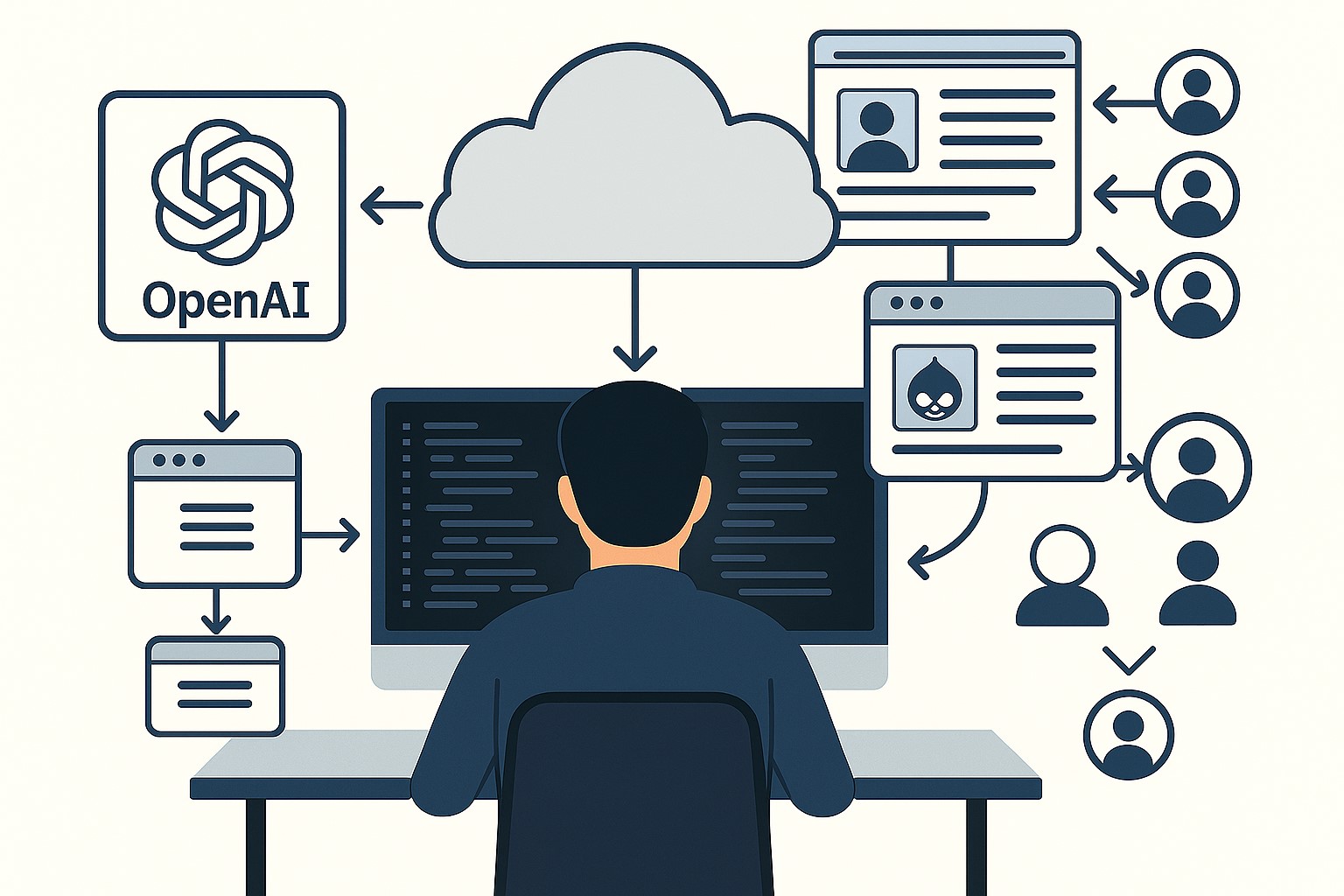July 1, 2025
As AI rapidly transforms how content is created and consumed, traditional content management systems (CMS) must evolve to keep pace. This article explores the challenges of information overload, the shift in user behavior toward AI-driven content synthesis, and the limitations of conventional CMS interfaces.

Delivering What Matters: The New Standard for AI-Era Web Experiences
The explosion of AI-driven services, especially generative AI and intelligent agents, has transformed content creation at an unprecedented pace. Every day, we see massive volumes of articles, posts, and media generated across platforms. While this flood of information can be empowering, keeping us constantly updated, it also introduces a challenge: redundancy and noise. Much of the content repeats similar themes, insights, or conclusions, making it increasingly difficult to filter what’s truly useful or relevant.
The Information Overload Dilemma
With the ever-increasing content volume, users simply cannot keep up. Instead of traditional browsing, many now rely on tools like chat-based agents (e.g., ChatGPT, Perplexity, or Claude) to synthesize and contextualize information. These tools offer a streamlined experience: a single prompt box delivering just what you need, free from clutter, pop-ups, or excessive navigation.
Yet, while the method of content generation has evolved rapidly, the way content is presented hasn’t kept pace. Most websites still rely on traditional layouts, forcing users to dig through multiple sections or pages to get to the information they seek. This mismatch between generation speed and user experience calls for a major rethink in how content is delivered.
My Journey Through CMS Evolution
Having spent over a decade working with various content management systems, I developed a deep appreciation for Drupal. Its modular architecture and developer-centric philosophy made it stand out from early on. Unlike other CMS platforms that prioritized ease of use at the cost of scalability, Drupal was built with maintainability, extensibility, and performance in mind. Each release introduced meaningful improvements to handle growing complexities in digital experiences.
However, Drupal’s strengths became pain points for smaller teams and startups. Its steep learning curve and increased maintenance overhead led many to migrate to more lightweight JavaScript-based frameworks such as Next.js, Nuxt, or SvelteKit. I, too, moved away from Drupal for a while to explore these emerging tools and the growing ecosystem around microservices, headless CMS, and AI-powered interfaces.
This detour provided valuable perspective. Despite the differences in tooling, the core challenges remained the same: how to best organize and deliver content that evolves with user expectations.
The Personalization Paradox
One of the biggest revelations was the growing importance, and complexity, of personalized user experiences. Marketing and product teams increasingly rely on usage analytics, A/B testing, and behavioral tracking to fine-tune their sites. Developers, in turn, build dynamic interfaces that aim to adapt to each user’s needs.
But personalization is a double-edged sword. While it promises relevance, it can also overwhelm. Multiple content sections, suggested reads, and call-to-actions can clutter the interface and confuse visitors. Users don’t want more content, they want the right content, delivered succinctly and contextually.
That’s where AI tools like chatbots, virtual assistants, and RAG (Retrieval-Augmented Generation) agents shine. They act as intelligent filters, interpreting queries, accessing structured knowledge, and delivering compact, personalized answers on demand. The best interfaces are often invisible: just a textbox that knows what you mean and gives you exactly what you need.
The Return to Drupal - With a New Lens
As AI started shaping how we consume content, I circled back to Drupal, and found it evolving in promising directions. The Drupal community, particularly under initiatives like Project Browser and Automatic Updates, has made Drupal more accessible to a wider audience. More importantly, Drupal is beginning to embrace AI integration, not just as a gimmick, but as a fundamental building block for intelligent content management.
One such promising development is the integration of Model Context Protocol (MCP), a framework designed to expose a CMS’s content architecture in a machine-readable, LLM-consumable format. MCP allows tools like ChatGPT or custom AI agents to understand and navigate your content structures directly. Imagine a future where users can ask natural language questions and receive personalized responses generated from your site’s structured content, without ever needing to leave the page.
This unlocks a new layer of AI-powered UX, where the CMS doesn’t just host content but becomes an intelligent content backend for conversational interfaces, custom dashboards, or even smart assistants.
Final Thoughts: Toward Intelligent Content Delivery
In the age of AI, the value of a CMS is no longer just in managing content, but in making it accessible, contextual, and intelligent. Drupal remains uniquely positioned in this space due to its robust content modeling, open-source ethos, and now, its growing integration with AI protocols.
The future of content is not just headless, it’s intelligent. Systems that understand their own content models and can serve that content in ways aligned with how users actually consume information today will be the winners in this new era.
Case in point: On 16 October 2024, the Drupal@Europa Web Platform Hackathon, organized by the European Commission and AWS, included a team that built a multilingual chatbot prototype using Amazon Kendra and Amazon Q Business. This chatbot enabled natural‑language navigation of Drupal‑based content, dramatically improving knowledge discovery in EU digital documentation.
Drupal, with its evolving ecosystem, may very well be that foundation.